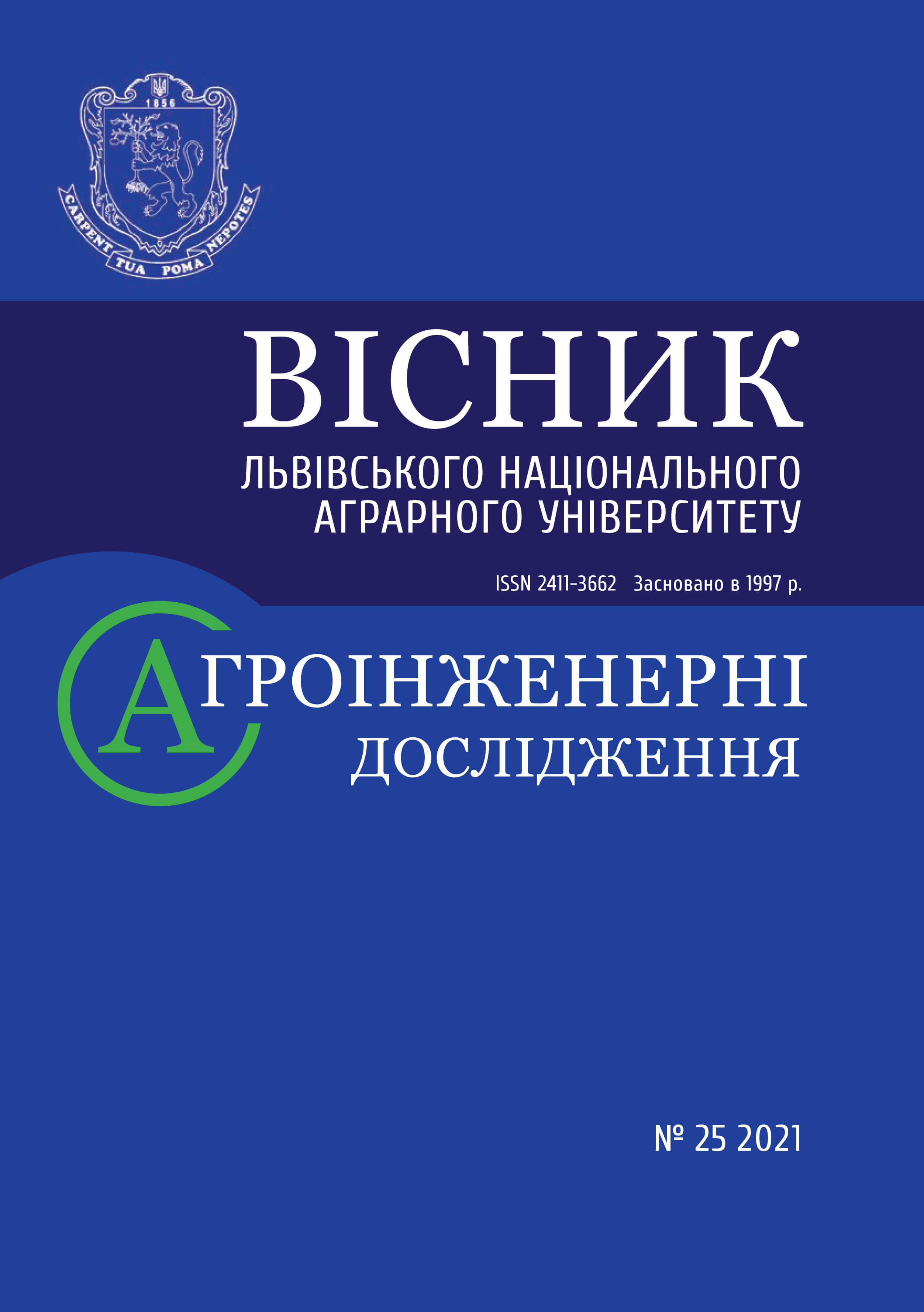Methodological principles for determining passive safety of the wheeled vehicles body designs
DOI:
https://doi.org/10.31734/agroengineering2021.25.189Keywords:
car, bus, passive safety, construction, body, indicator, techniqueAbstract
The article presents improvement of the methodological principles for determining the passive safety of body structures of wheeled vehicles by applying the finite element method. According to the methodology, the passive safety of wheeled vehicles is largely ensured by the design of their bodies and cabs. They help to absorb the main part of the impact energy that occurs in a traffic accident and ensure the preservation of the residual living space inside the cabin for the driver, passengers and reduce the emergency loads acting on them. In accordance with the existing requirements and for the convenience of their application in the process of designing the body structures of wheeled vehicles, four criteria for assessing the passive safety of body structures have been developed. According to the method, at the initial stage of design, when there are no drawings of surfaces and the geometry of the body structure must be pre-selected for its rational power scheme, taking into account the requirements of passive safety and strength of the structure. At the same time, the necessary sizes of constructive sections, their ratio between power elements have to be defined. In this case, the engineering method of calculating the structures by the boundary state, based on the kinematic theorem, should be used. In parallel, at least one design sample should be prepared for testing for final verification of the results. With their proper convergence, the obtained finite element model can be used to assess the passive safety of the structure under the conditions of all regulated by the types of emergency loads. In this case, the assessment of passive safety of the modified design options (modifications of the basic model) can already be carried out without conducting experiments. Existing modern software packages LS-Dyna and Abaqus, which allow to do it at a fairly appropriate level. according to safety requirements and finally check it at the final stage. The results of this work should be used by the relevant authorities in the certification of vehicles.
References
Aulin, V., Hrynkiv, A., Lysenko, S., Rohovskii, I., Chernovol, M., Lyashuk, O., & Zamota, T. (2019). Studying truck transmission oils using the method of thermal-oxidative stability during vehicle operation. Eastern-European Journal of Enterprise Technologies, 1 (1/6(97)), 6–12. doi: 10.15587/1729-4061.2019.156150.
Brylev, I., Evtiukov, S., & Evtiukov, S. Problems of calculating the speed of two-wheeled motor vehicles in an accident. Transportation Research Procedia, 36, 84–89. doi: 10.1016/j.trpro.2018.12.047.
Evtiukov, S., Karelina, M., & Terentyev, A. (2018). A method for multi-criteria evaluation of the complex safety characteristic of a road vehicle. Transportation Research Procedia, 36, 149–156. doi:10.1016/j.trpro. 2018.12.057.
Hashemi, S. M. (2019). Strength of Super-Structure UN-ECE R66 Rollover Approval of Coaches based on Thin-Walled Framework Structures. Vehicle Structures & Systems, 1(4), 78–84.
He, Y., & McPhee, J. (2019). A design methodology for mechatronic vehicles: Application of multidisciplinary optimization, multibody dynamics and genetic algorithms. Vehicle System Dynamics, 43(10), 697–733. doi: 10.1080/00423110500151077.
Hrynkiv, A., Rogovskii, I., Aulin, V., Lysenko, S., Titova, L., Zagurskіy, O., & Kolosok, I. (2020). Development of a system for determining the informativeness of the diagnosing parameters of the cylinder-piston group of the diesel engines in operation. Eastern-European Journal of Enterprise Technologies, 3 (5(105)), 19–29. doi: 10. 15587/1729-4061.2020.206073.
Kresan, T., Pylypaka, S., Ruzhylo, Z., Rogovskii, I., & Trokhaniak, O. (2020). External rolling of a polygon on a closed curvilinear profile. Acta Polytechnica, 60(4), 313-317. doi: 10.14311/AP.2020.60.0313.
Marusin, A., Marusin, A., & Danilov, I. (2018). A method for assessing the influence of automated traffic enforcement system parameters on traffic safety. Transportation Research Procedia, 36, 500-506. doi: 10.1016/j.trpro. 2018.12.136.
Nazarenko, I., Dedov, O., Bernyk, I., Rogovskii, I., Bondarenko, A., Zapryvoda, A., & Titova, L. (2020). Study of stability of modes and parameters of motion of vibrating machines for technological purpose. Eastern-European Journal of Enterprise Technologies, 6 (7–108), 71–79. doi: 10.15587/1729-4061.2020.217747.
Rogovskii, I. L., Titova, L. L., Voinash, S. A., Sokolova, V. A., Tarandin, G. S., & Polyanskaya, O. A. (2021). Modeling the weight of criteria for determining the technical level of agricultural machines. IOP Conference Series: Earth and Environmental Science, 677, 022100. doi: 10.1088/1755-1315/677/2/022100.
Safiullin, R., Marusin, A., Safiullin, R., & Ablyazov, T. (2019). Methodical approaches for creation of intelligent management information systems by means of energy resources of technical facilities. E3S Web of Conferences, 140, 10008. doi: 10.1051/e3sconf/2019140100 08.
Saplinova, V., Novikov, I., & Glagolev, S. (2020). Design and specifications of racing car chassis as passive safety feature. Transportation Research Procedia, 50, 591-607. doi: 10.1016/j.trpro.2020.10.071.
Soo, S., Abdel, S., Khodyakov, A., Marusin, A., Danilov, I., Khlopkov, S., & Andryushenko, I. (2020). The ways of effectiveness increase of liquid fuel with organic addition appliance in transportation. Advances in Transportation Sciences, 170, 833–838.
Voinalovych, O., Hnatiuk, O., Rogovskii, I., & Pokutnii, O. (2019). Probability of traumatic situations in mechanized processes in agriculture using mathematical apparatus of Markov chain method. Engineering for Rural Development, 18, 563–269. doi: 10.22616/ERDev2019.18. N245.


